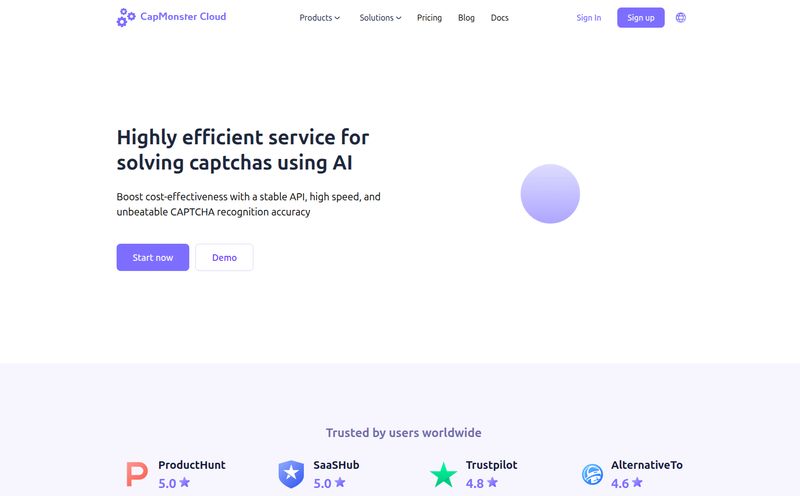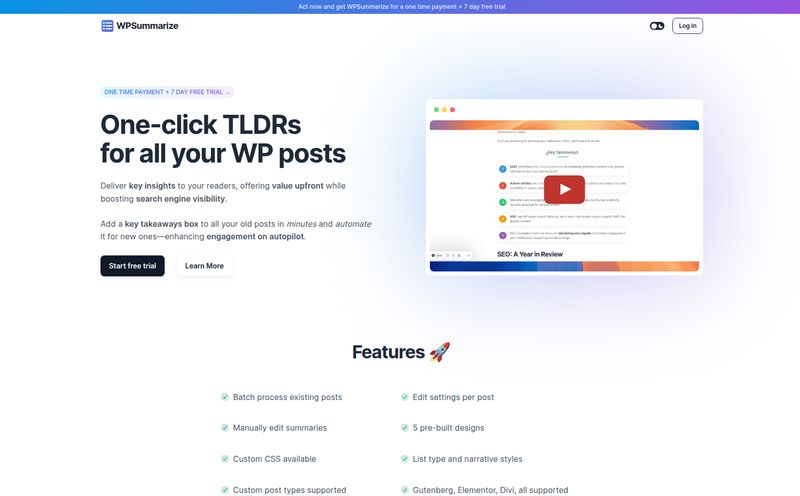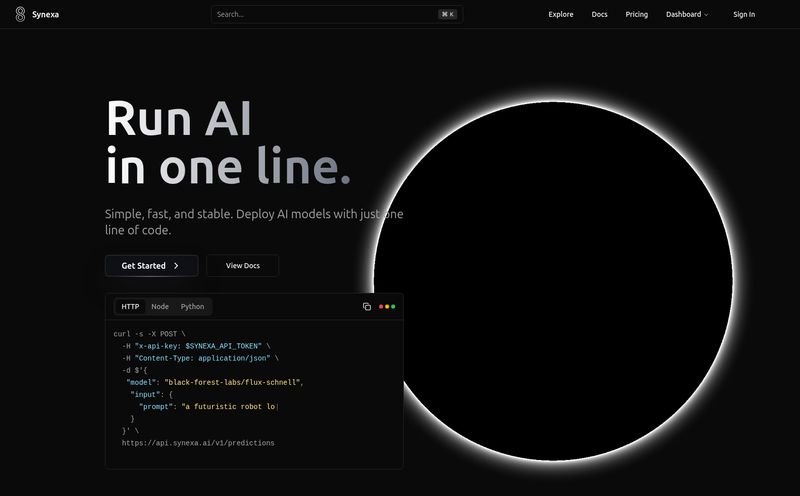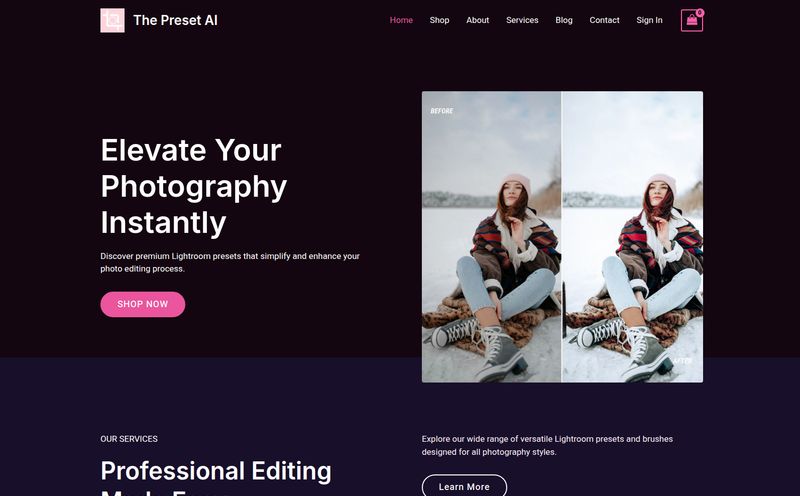I’ve been in the traffic generation game for years. SEO, CPC, you name it. But long before that, I spent a summer working for a local distribution company. My "fleet management" toolkit? A clipboard, a two-way radio that was mostly static, and a whole lot of hoping drivers would be where they said they would be. We tracked incidents with paper forms, and safety meetings were basically just someone reading from a binder.
Things have… changed. A lot.
Today, we're talking about Artificial Intelligence not just in our marketing tools, but inside the cabs of our commercial vehicles. And one name that keeps popping up on my radar is Netradyne. They’re making some big claims with their Driver•i platform, promising to slash distracted driving and revolutionize fleet safety. So, is it just another piece of shiny tech, or is it the co-pilot every fleet manager has been dreaming of? Let's get into it.
What Exactly is This Netradyne Driver•i Thing?
Okay, first things first. Don't think of Driver•i as just another dash cam. That’s like calling a smartphone just a phone. A regular dash cam records what happens. That's it. It’s a passive observer.
Netradyne’s Driver•i is an active participant. It uses an AI-powered camera system to see and understand what’s happening both on the road ahead and inside the cab. It's less of a tattletale and more of a real-time driving coach. Imagine having a hyper-aware, incredibly patient instructor in every vehicle, one who only speaks up to gently nudge your driver back on track. "Hey, little too close to that car," or "Eyes on the road, champ." That's the core idea here.
It’s designed to do more than just record accidents; its primary job is to prevent them from ever happening.
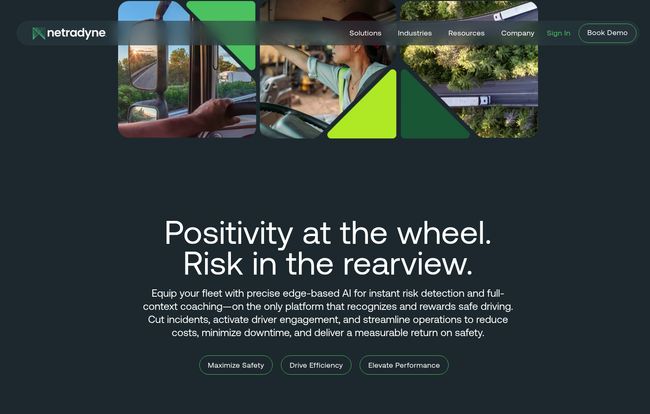
Visit Driver•i AI Fleet Camera System
The Key Features That Caught My Eye
A platform is only as good as its features, right? And Driver•i has a few that really stand out from the crowd of telematics solutions out there.
The All-Seeing AI Eye
This is the heart of the whole system. The camera isn't just a lens; it's powered by an AI that's constantly analyzing video data. It's trained to spot the kind of stuff that gives fleet managers nightmares. We're talking about recognizing when a driver is on their phone, looking away from the road for too long, or even showing signs of drowsiness.
It also keeps a close watch on following distance, a massive contributor to rear-end collisions. The AI calculates this in real-time and can alert the driver if they're tailgating. It’s proactive safety, not reactive paperwork.
A Voice of Reason with Real-Time Alerts
Here’s where it gets really interesting for me. Instead of just logging an "event" for a manager to review three days later, Driver•i provides in-cab audio alerts at the moment of the risky behavior. This is a total game-changer. It gives the driver a chance to self-correct immediately.
Think about it. The old way was punitive. You get called into the office days after the fact to review a clip. It feels like you're in trouble. The Netradyne approach feels more like a helpful reminder. It closes the feedback loop from days to seconds, which is how you actually build better habits.
Coaching That Actually Works
Netradyne seems to get that there are different levels of intervention needed. They offer both Driver Self-Coaching and Managed Coaching. The self-coaching part is brilliant—it gives drivers access to their own performance data and videos. It empowers them, builds trust, and encourages them to take ownership of their safety record.
Of course, for more serious or repeated issues, a manager needs to step in. The platform facilitates this with detailed reports and video evidence, making those conversations more productive and data-driven, rather than just "I heard you were speeding."
The Good, The Bad, and The Complicated
No tool is perfect. Let's be real. After years of reviewing platforms, I know there's always a trade-off. Here's my breakdown of where Netradyne really delivers and what you need to think about before signing on the dotted line.
The Upside: Where Netradyne Shines
The potential for enhanced safety is massive. Netradyne’s own site mentions the possibility of reducing distracted driving by up to 67%. For any fleet, that's a number that could drastically change your insurance premiums and, more importantly, your peoples' well-being. And in the unfortunate event of an incident that isn't your driver's fault, having crystal-clear, exonerating video footage is invaluable. It can be the difference between a quick resolution and a long, drawn-out legal battle.
I also like the positive reinforcement aspect. The system tracks a "GreenZone Score," which recognizes and rewards good driving. It's not just about flagging mistakes; it's about celebrating success. This is absolutely critical for building a positive safety culture rather than one based on fear. It fosters a sense of partnership between drivers and management.
The Considerations: It's Not All Plug-and-Play
Now for the other side of the coin. First, the investment. This isn't a $50 dash cam from Amazon. It's a professional-grade system with hardware, software, and data costs. You have to view it as an investment in your company's future, one whose ROI is measured in fewer accidents, lower insurance costs, and improved operational efficiency.
Then there's the big one: driver privacy. The idea of an AI camera watching them can feel very "Big Brother" to drivers. And honestly, I get it. This is probably the biggest hurdle to implementation. Success here hinges entirely on communication. You have to be transparent about why the system is being installed—for their safety, to protect them from false claims, and to help everyone get home in one piece. If you frame it as a tool for them, not a weapon against them, you have a much better chance of getting buy-in.
Finally, you can’t just install the hardware and expect magic. To get the most out of Driver•i, you need to commit to using the data, training your managers on the coaching tools, and integrating it into your safety program. Its a tool, not a magic wand.
So, How Much Does Netradyne Cost?
This is the question on everyone’s mind. And the answer is... it depends.
You won't find a pricing page on Netradyne's website, and that's pretty standard for this kind of B2B solution. The cost is tailored to each fleet. It will vary based on factors like:
- The number of vehicles in your fleet
- The specific features you need
- The length of your contract
Your best bet is to do what they suggest on their site: Book a Demo. This will let you talk to their team, explain your fleet's specific needs, and get a custom quote that makes sense for your business. Don't be afraid to ask the tough questions about setup fees, data plans, and hardware costs.
Is This System Right for Your Fleet?
While it might seem like a tool for giant, long-haul trucking operations, the reality is that any company with vehicles on the road could see a benefit. Based on their own site, Netradyne serves a wide range of industries, including:
- Trucking & Logistics
- Construction
- Delivery Services
- Oil & Gas
- Passenger Transit
- School Transportation
- Waste Management
If driver performance, compliance, and safety are critical to your operation (and let's be honest, when are they not?), then it's a platform worth investigating. It's for the fleet manager who wants to move from putting out fires to preventing them in the first place.
Frequently Asked Questions about Netradyne
How does Netradyne handle driver privacy?
The system is primarily focused on risk, not constant surveillance. It's designed to capture and analyze risky events. The key to successful adoption is transparency with drivers about how the data is used—to improve safety and protect them, not to spy.
Is the Driver•i system hard to install?
Installation involves mounting the camera unit in the vehicle and connecting it to a power source. While it's a bit more involved than a simple plug-in dashcam, Netradyne and its partners typically provide support and guidance for proper installation across a fleet.
Does Driver•i work for small fleets too?
Yes. While it's a robust system capable of handling thousands of vehicles, the principles of safety, coaching, and risk reduction apply just as much to a fleet of 15 vehicles as to a fleet of 1500. The pricing and plan would be scaled to your size.
Can Netradyne actually help lower our insurance costs?
Many insurance providers offer discounts for fleets that use advanced telematics and video safety systems. By demonstrating a proactive commitment to safety and having a lower incident rate, fleets can often negotiate better premiums. It's a major potential ROI.
What makes this so different from a regular dash cam?
A regular dash cam just records. Driver•i's AI analyzes the video in real-time to identify risk, provides immediate audio feedback to the driver, and offers a comprehensive platform for data analysis and coaching. It's a proactive safety system, not just a passive recorder.
How does the driver coaching feature really work?
It provides drivers with access to a dashboard where they can review their own "events" (like a harsh brake or a moment of distraction). They see what the AI saw, helping them understand and improve their habits. For managers, the platform provides a more structured way to review significant or repeated events with drivers using clear video evidence.
Final Thoughts
Look, the days of the clipboard and static-filled radio are long gone. AI is here, and it's changing how we manage safety and performance on the road. A system like Netradyne's Driver•i represents a pretty significant shift from a reactive, punitive model of fleet management to a proactive, preventative, and collaborative one.
There's an investment, for sure. And you absolutely have to nail the communication with your drivers. But the potential to create a stronger safety culture, reduce costly incidents, and protect your team and your business is undeniable. In the high-stakes world of fleet operations, having an AI co-pilot that never sleeps might just be the smartest move you can make.
Reference and Sources
- Netradyne Official Website: https://www.netradyne.com/
- NHTSA Traffic Safety Facts on Distracted Driving: https://www.nhtsa.gov/distracted-driving/
- Federal Motor Carrier Safety Administration (FMCSA): https://www.fmcsa.dot.gov/
